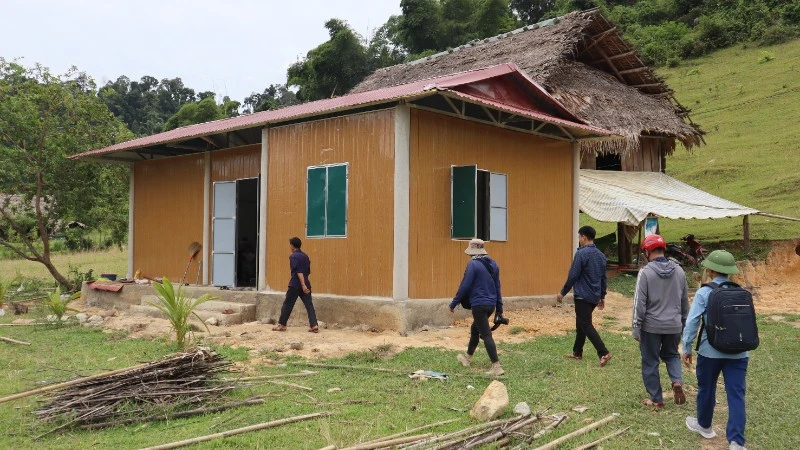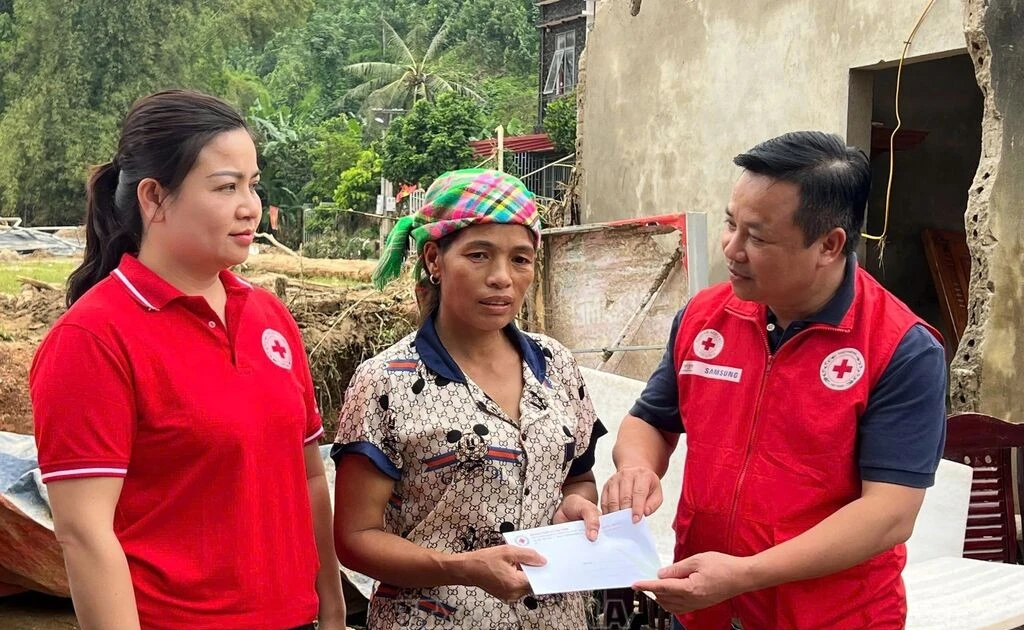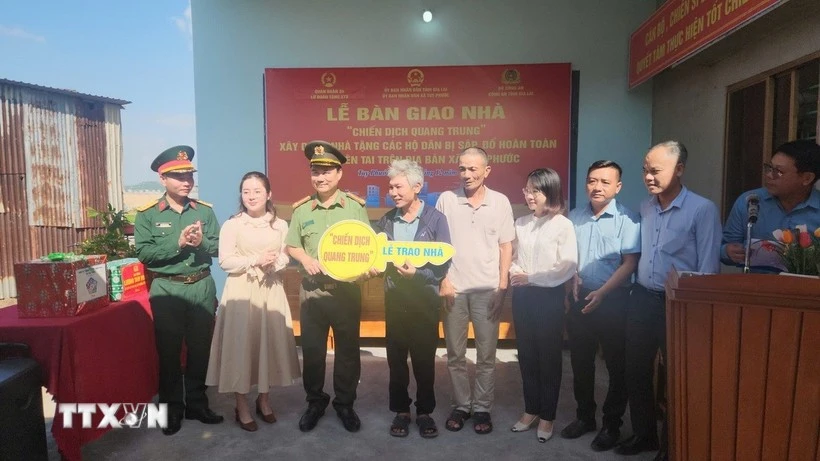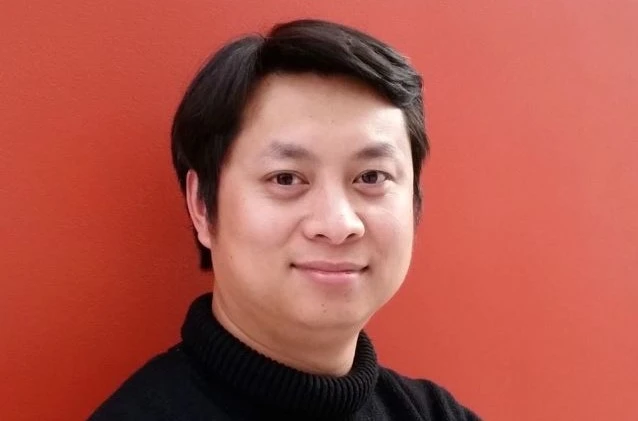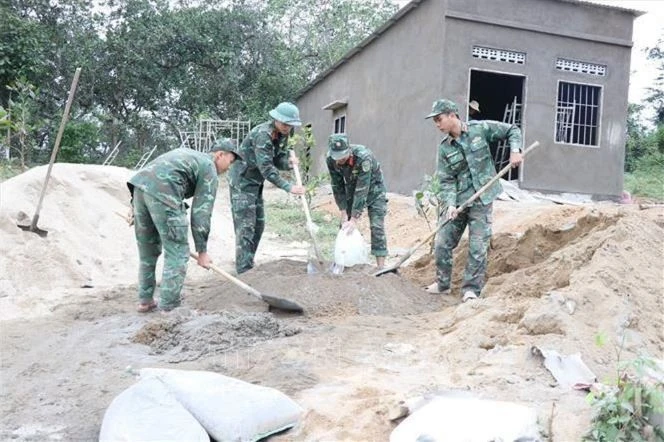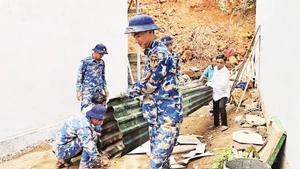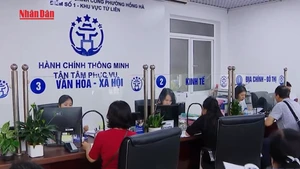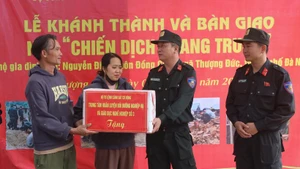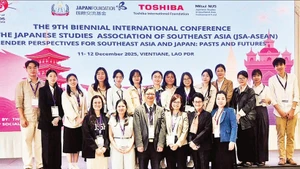Joy in the vast Pu Mat forest
Although there had been no rain for days and the road had been levelled for easier transport of construction materials, the only route less than 20 km from the centre of Mon Son commune into Co Phat hamlet was still extremely difficult. It took us more than an hour by motorbike to reach Co Phat.
With the appearance of new houses roofed with corrugated iron sheets, the face of the hamlet has now changed completely, in stark contrast to the dilapidated thatched houses of the past. Co Phat hamlet head La Van Tam happily said: “Each house only took a few days to build, do you see how fast it is? Getting the materials in here was the real issue – seven lorry tyres burst.”
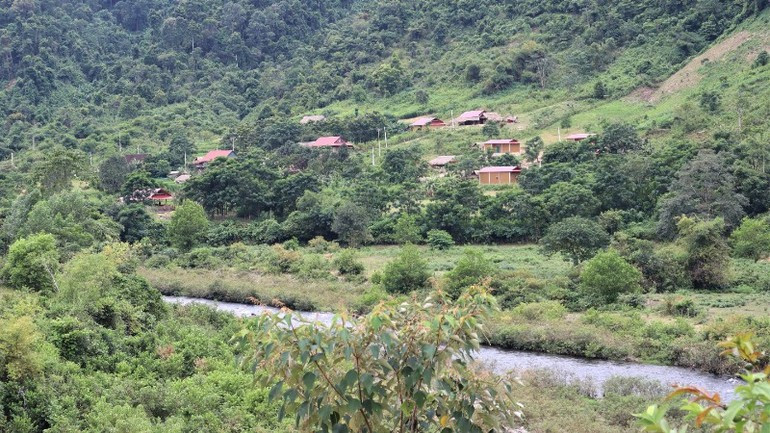
Following the hamlet head, we visited the home of Luong Van Dan (born 1974). In front was a fish pond, behind the old thatched house, and the new house with its bright red corrugated roof stood out prominently. When we arrived, he was looking for a special spot to hang a portrait of President Ho Chi Minh.
“I am so happy, I never even dreamed of having a solid, spacious three-room house like this,” Dan emotionally shared.
Among the 11 repaired houses in Co Phat, the home of Luong Van Phu’s family (born 1985) was the most spacious. In addition to the 45 million VND support and their savings, he and his wife boldly borrowed more from the bank to enlarge the house.
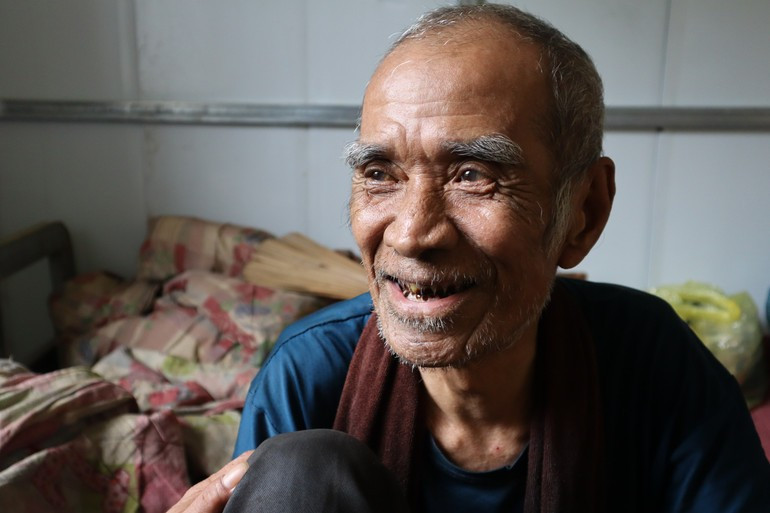
Co Phat and Bung hamlets are connected by a concrete road running through Pu Mat National Park. On the way to Bung, we visited the new house of Le Van Thanh (born 1944).
Old and frail, Thanh lives with his son, born 1975, who is disabled. For many years, father and son had lived in an old thatched house crudely walled with woven bamboo.
With a radiant smile, Thanh emotionally shared: “Life is hard, even daily food was a struggle, so father and son never dared to think about repairing the house. Now, thanks to the care of the Party and the State, and with everyone helping to build a house, we are truly happy and grateful.”
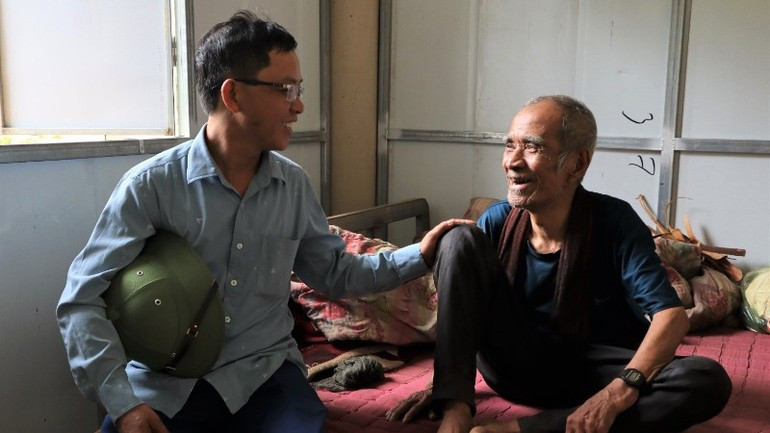
In Bung hamlet, 28 new houses were built and nine repaired. While moving belongings from the old house into the new, Le Thi Phuong (born 1968) said: “We got land use certificates and now support to build new houses, we are so happy. Since moving in, we are so excited we can hardly sleep. The dream of having a solid home for old age has come true.”
Not far away, Le Thi Hoa (born 1989) was arranging the bed she had just moved from the old house. She said: “The old house was damaged, but we were too poor to repair it, raising five children with no money. Now we have support to build a house – it feels like a dream come true. With a house, my husband is reassured when he goes to work far away, and I plan to raise pigs and chickens to earn money for the children.”
La Van Linh, head of the Fatherland Front work committee in Co Phat, said the day people received land use right certificates was a “historic day” for the Dan Lai people because the State officially recognised them as owners of their land and fields. Together with support for building or repairing houses, the joy was doubled.
The day of receiving the land use right certificate was a ‘historic day’ for the Dan Lai people because the State recognised them as the owners of their land and fields. Together with support for building or repairing houses, the joy was doubled.
La Van Linh, head of the Fatherland Front work committee in Co Phat hamlet.
From once living off the forest, foraging and subsistence farming, people now raise buffaloes and cows in pens, cultivate wet rice, and take contracts for forest protection.
Notably, many young people work as labourers, marry people from other places, and some have even gone abroad as guest workers, sending money home. Life is improving, no longer overshadowed by darkness, hunger, and cold.
Photo: Dan looking for a place of honour to hang a portrait of President Ho Chi Minh on the first day of moving into the new house.
Eliminating empty gardens and barns
Co Phat and Bung have a total of 243 households, of which 235 are poor. In this programme of eliminating temporary houses, 78 homes in the two hamlets were approved for support.
The number of houses was large, the area remote, transport difficult, material costs high, and the households supported were too poor to contribute any counterpart funds.
In addition, since their residential land fell within Pu Mat National Park, this created legal “bottlenecks” that had long hindered support for housing construction.
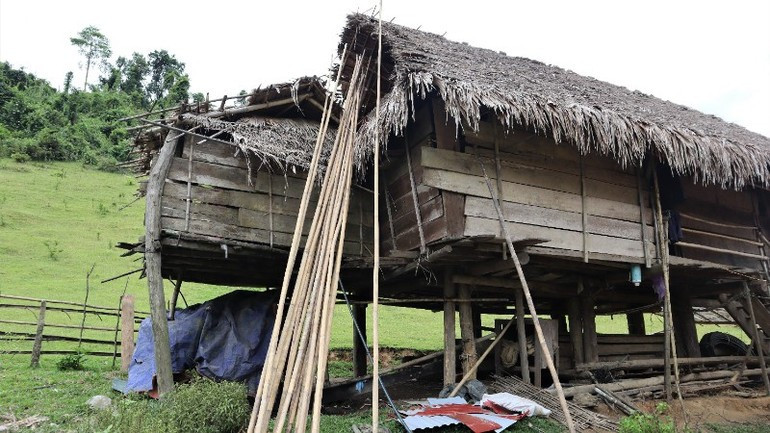
Faced with these difficulties, the Nghe An Provincial Party Secretary agreed to increase support from 60 million VND to 90 million VND per new house, and from 30 million VND to 45 million VND for repairs.
The provincial leadership also instructed the People’s Committee to direct relevant agencies to resolve the land use certificate issue and set a deadline for completion.
Thanks to timely, decisive direction from provincial leaders, 455 land use right certificates covering around 360 hectares were issued to residents of Co Phat and Bung in early July.
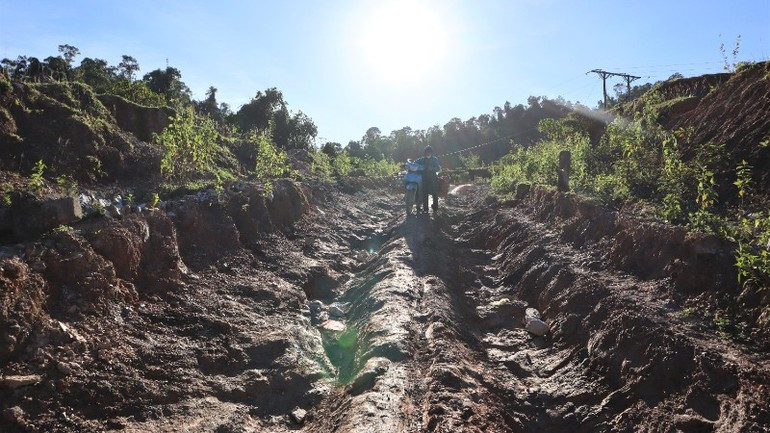
Vi Van Bach, Chairman of the Viet Nam Fatherland Front Committee of Mon Son commune, said that as soon as the Steering Committee for the provincial housing support programme finalised the house designs and raised the support funding, soldiers, border guards, police, forest rangers, commune officials, and Pu Mat National Park staff immediately helped villagers build temporary shelters, dismantle old houses, and hand over sites for construction. Two rounds of mobilisation brought in about 60 people each, divided into four teams to actively assist villagers.
In addition to labour, commune staff also contributed money to help households pay registration fees for land certificates.
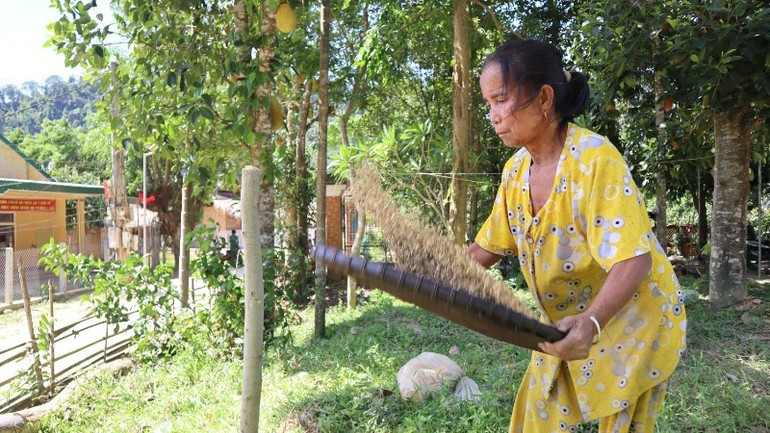
According to Mon Son Party Secretary Luong Dinh Viet, eliminating temporary houses for the Dan Lai people of Co Phat and Bung faced many difficulties. The hamlets lie deep in the forest, making transport costly and workers reluctant to go in, even for higher wages, since each trip required staying for days.
Although the plan aimed for completion before August 15, construction was finished by early August. This positive outcome was thanks to the engagement of the entire political system, especially timely provincial direction in issuing land use certificates, adjusting policies, and raising support levels.
In the coming time, the locality will focus on supporting people to boost farming and animal husbandry, eliminating the situation of empty gardens and barns. However, to spur socio-economic development, improving the quality of the road from the commune centre into the hamlets is essential.
Luong Dinh Viet, Secretary of Mon Son Commune Party Committee.
Major Hoang Ngoc Binh, Political Commissar of Mon Son Border Guard Station, Nghe An Border Guard Command, said that as a unit stationed in Mon Son commune, they had always accompanied local authorities in caring for and supporting the Dan Lai people of Co Phat and Bung. When the housing programme was launched, the unit deployed forces to stay in the hamlets, help villagers build temporary shelters, dismantle old houses, and hand over sites for construction.
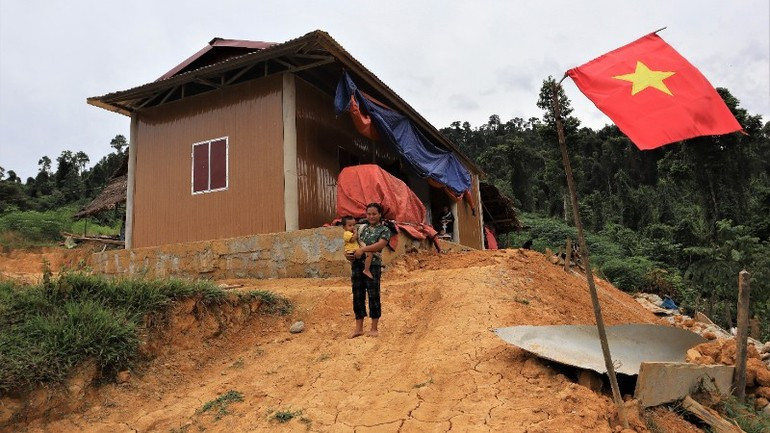
“Thesenew houses will give the Dan Lai people the conditions to improve their life, no longer having to endure leaking roofs and draughts, and soon escaping poverty and hardship,” said Major Binh.
